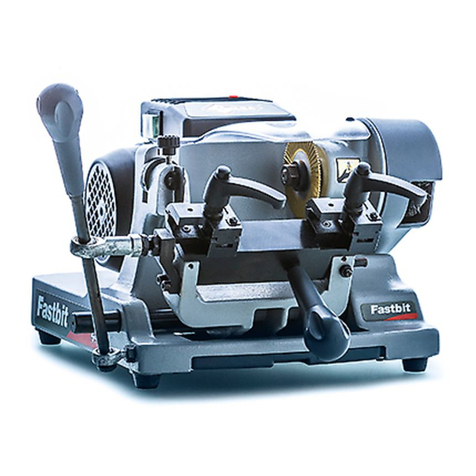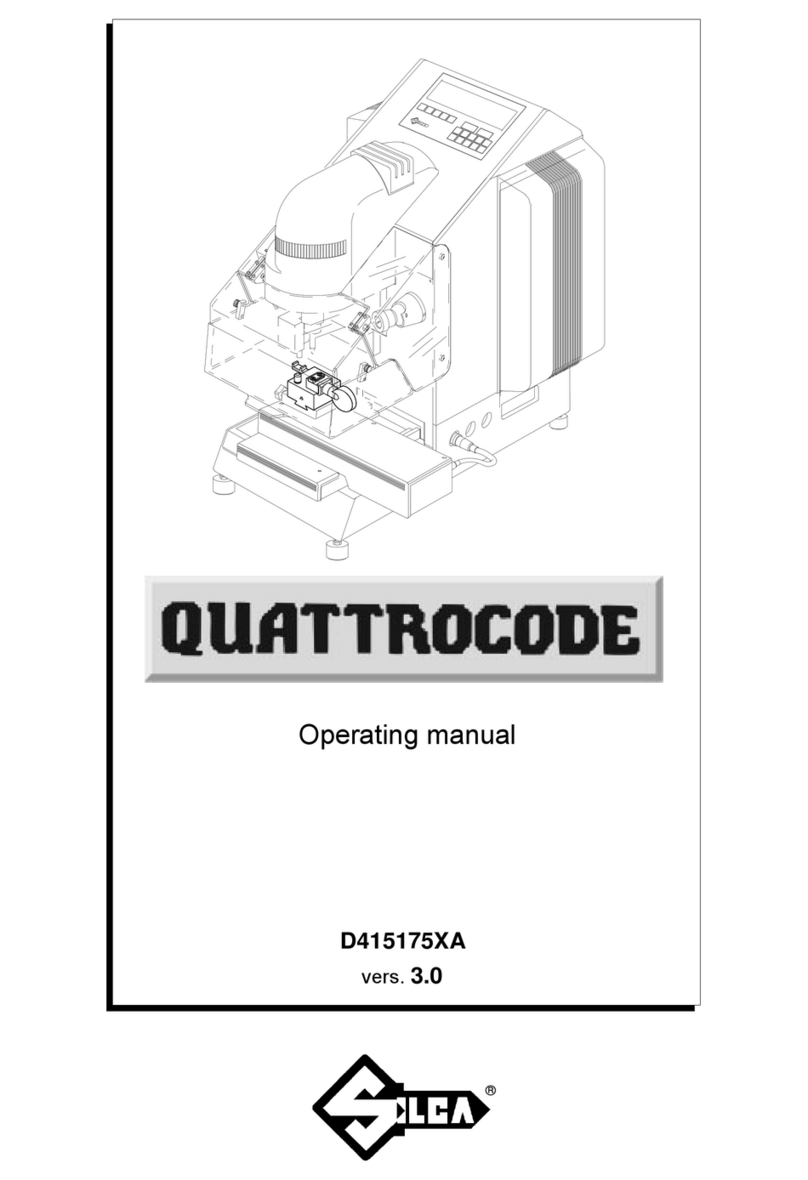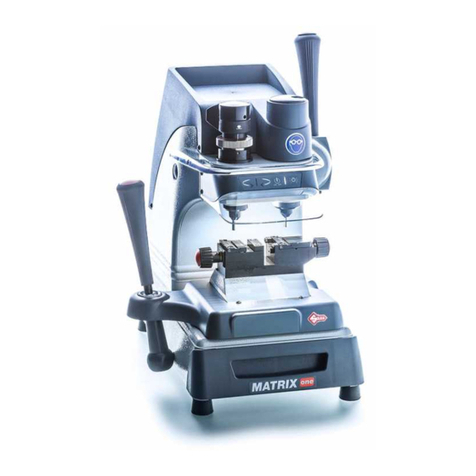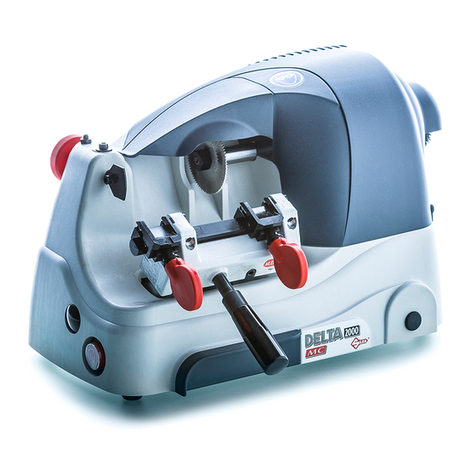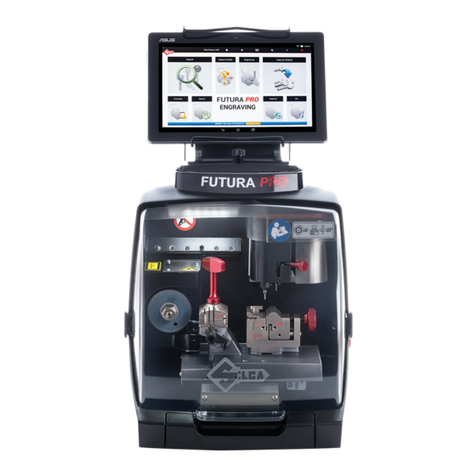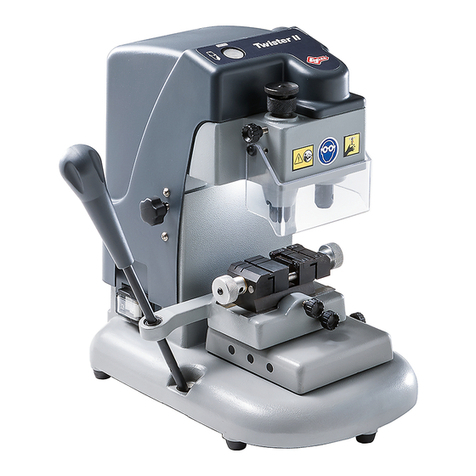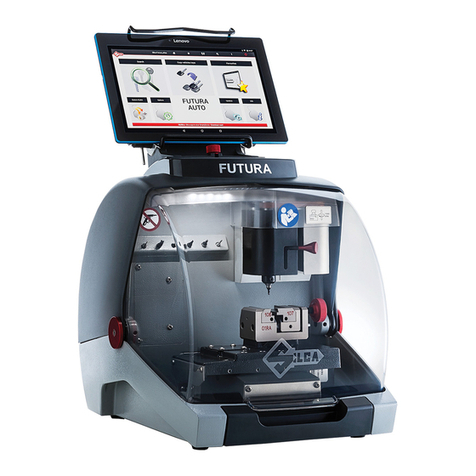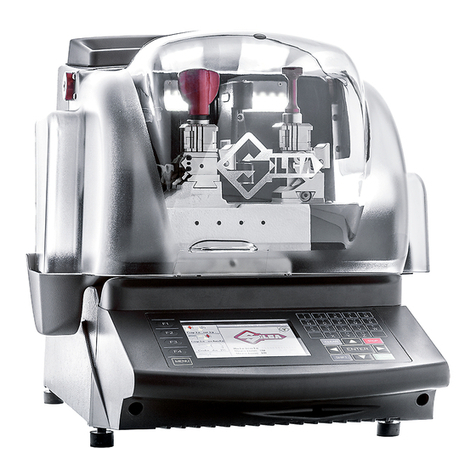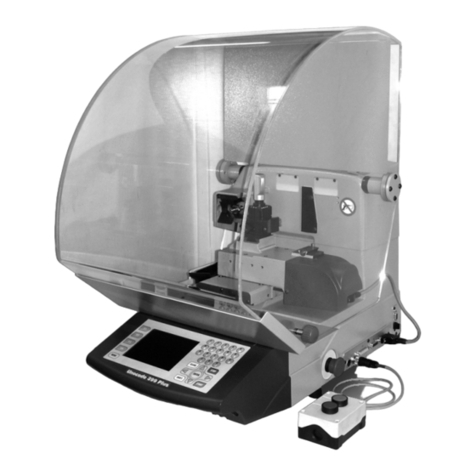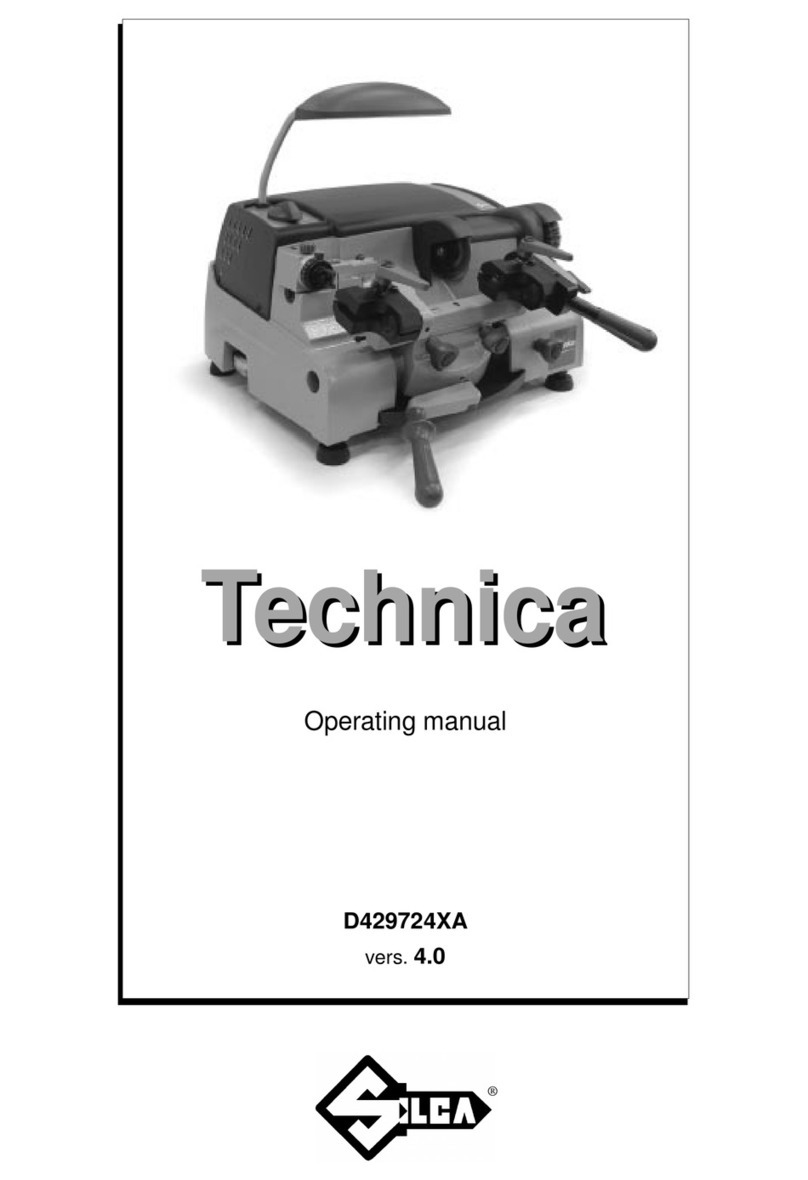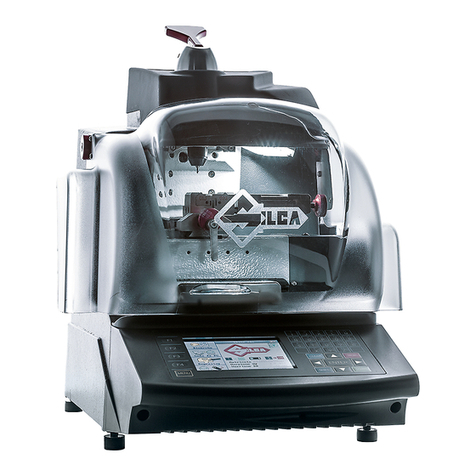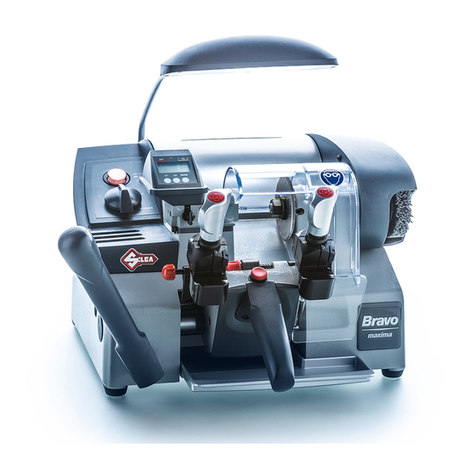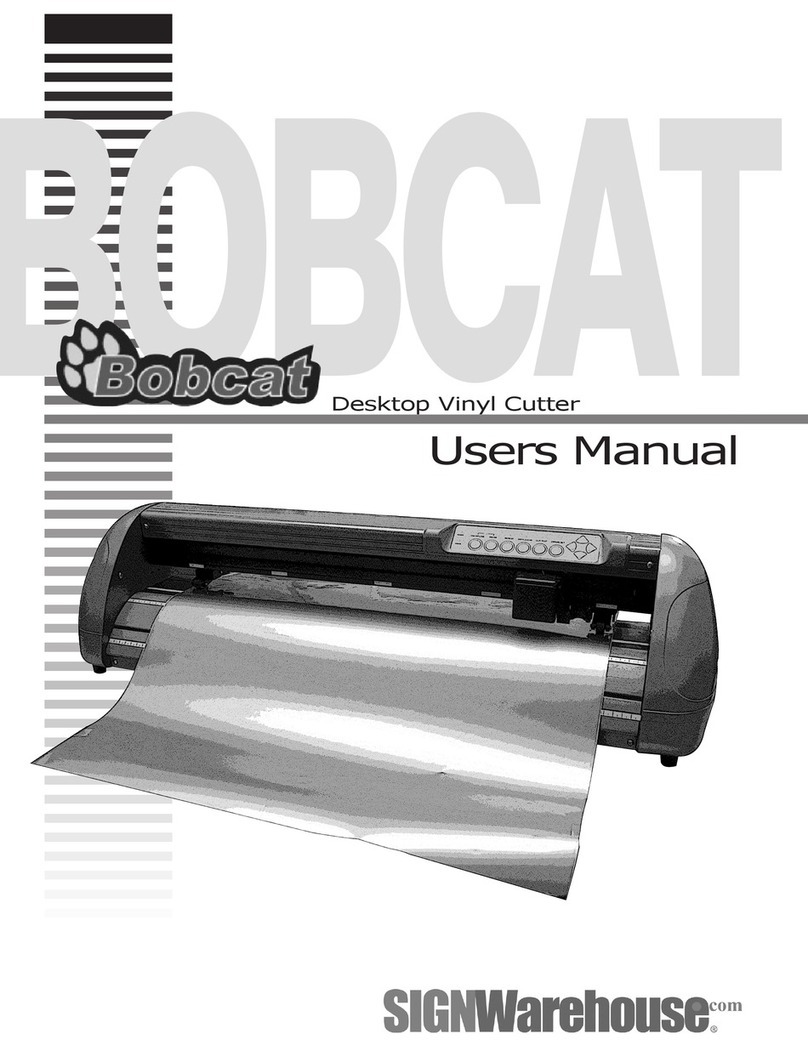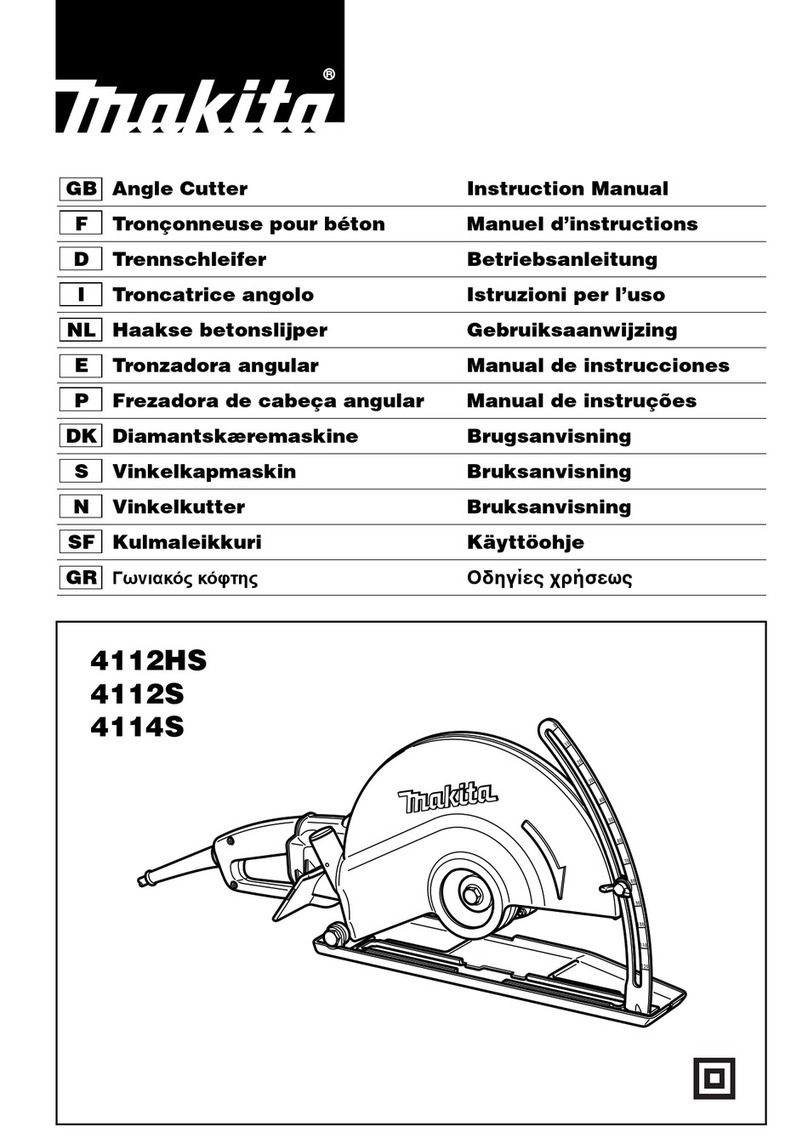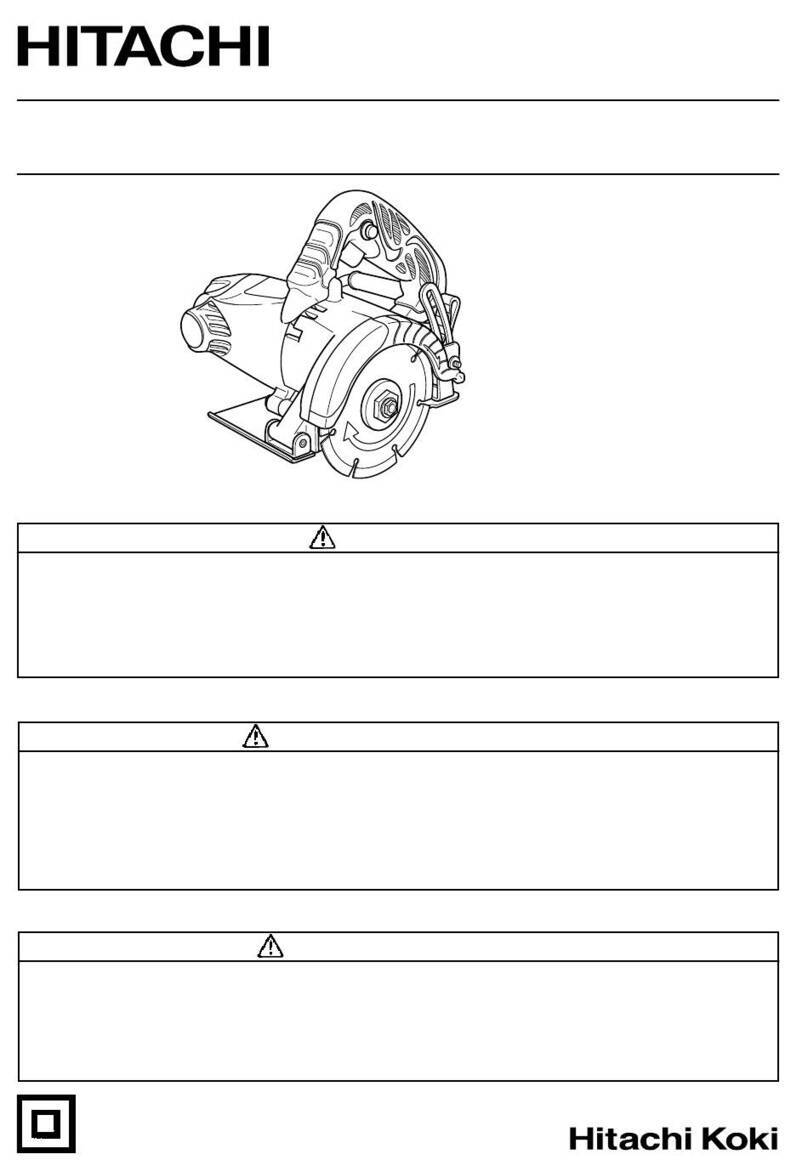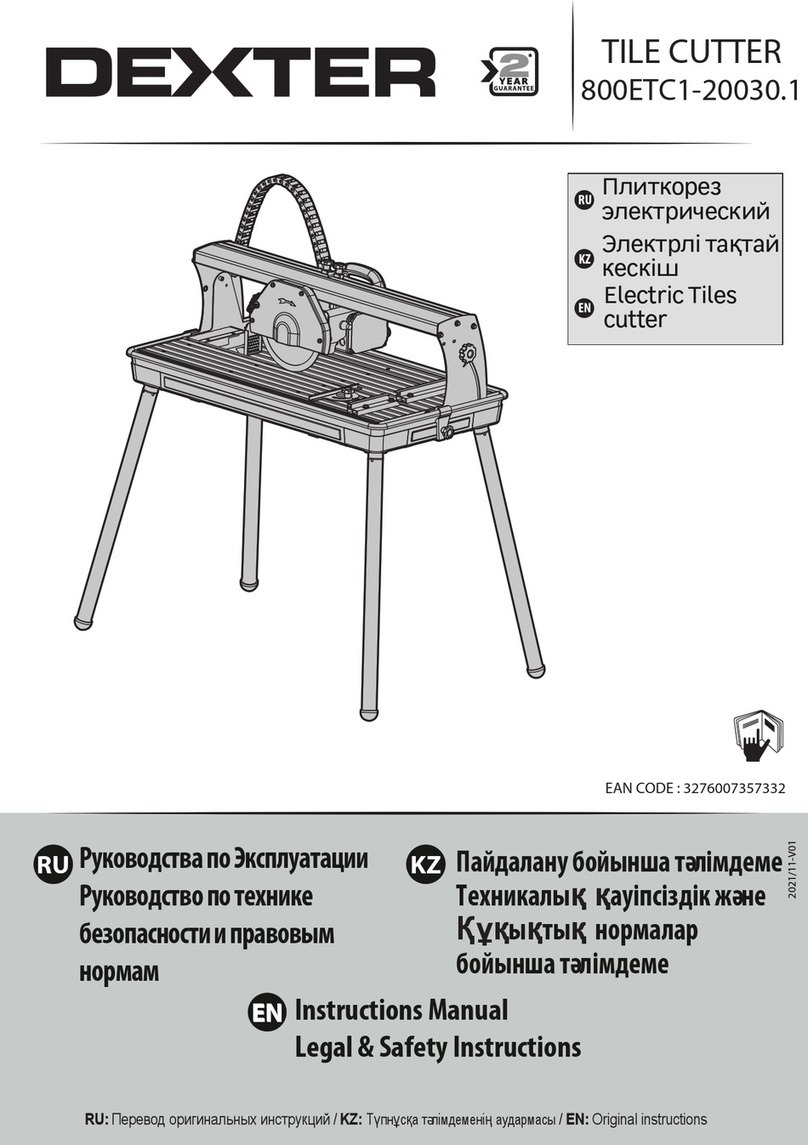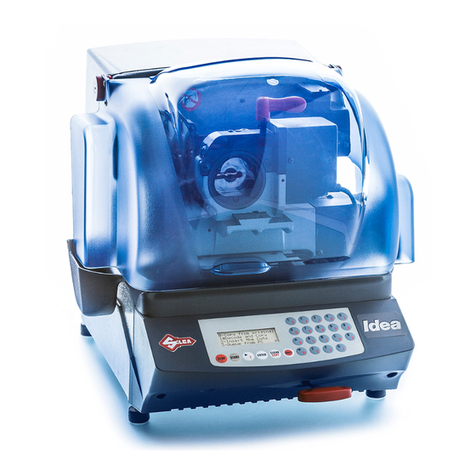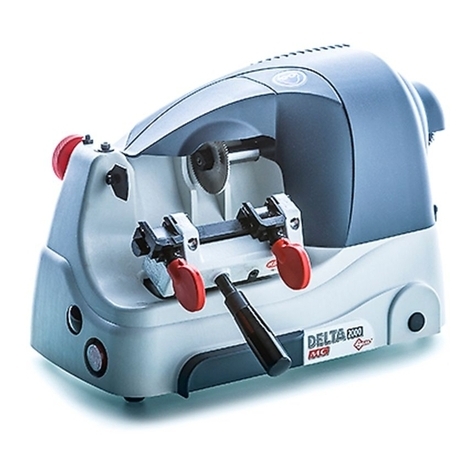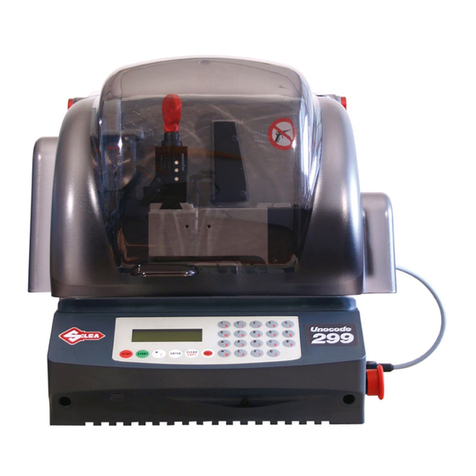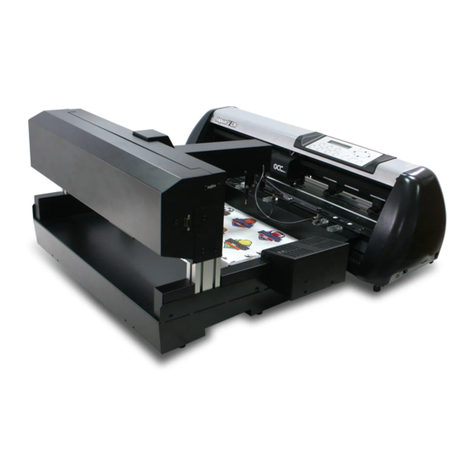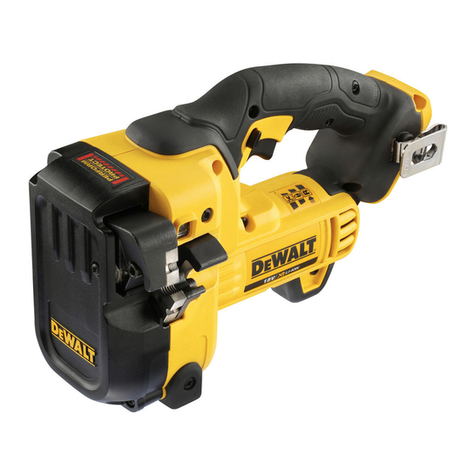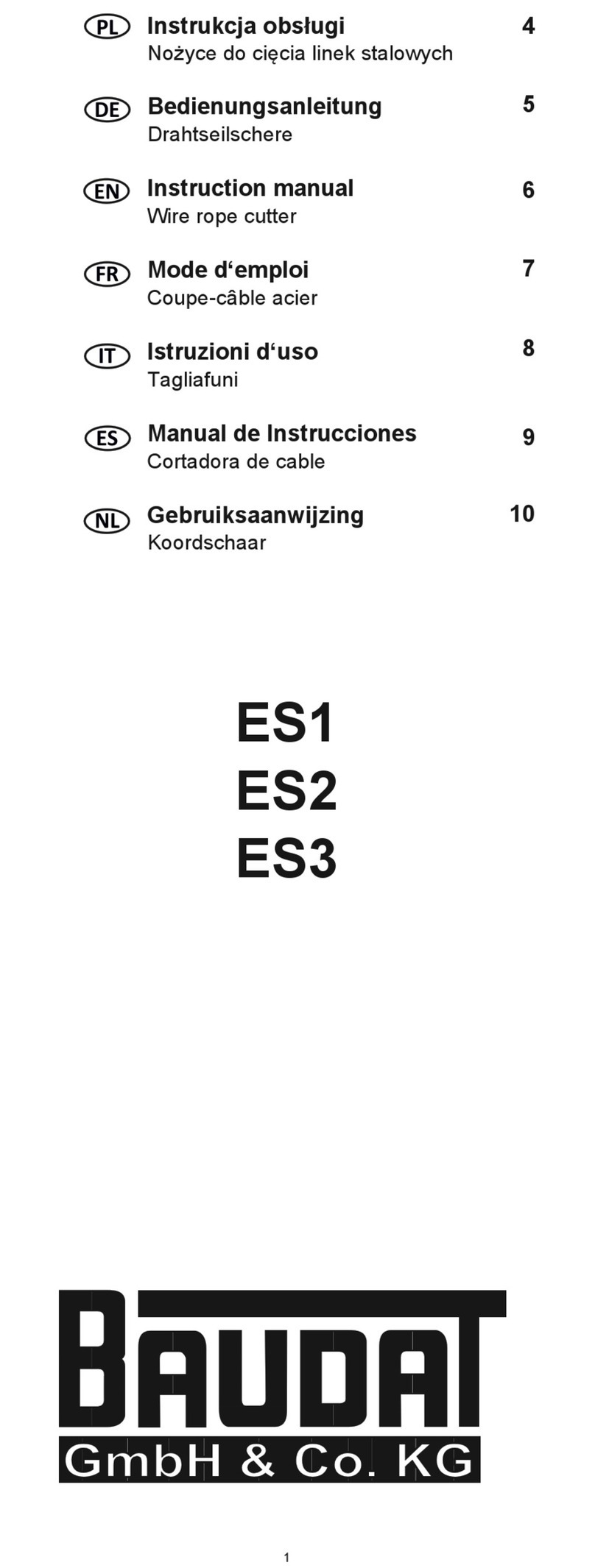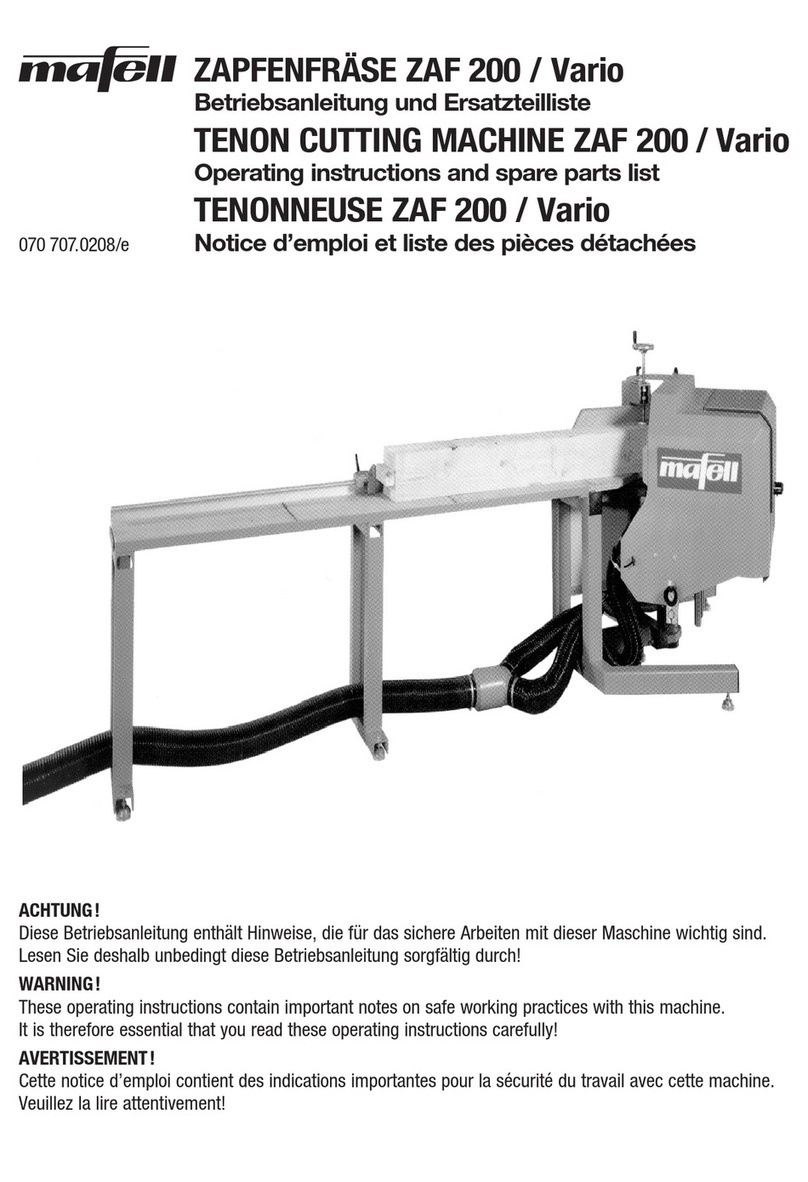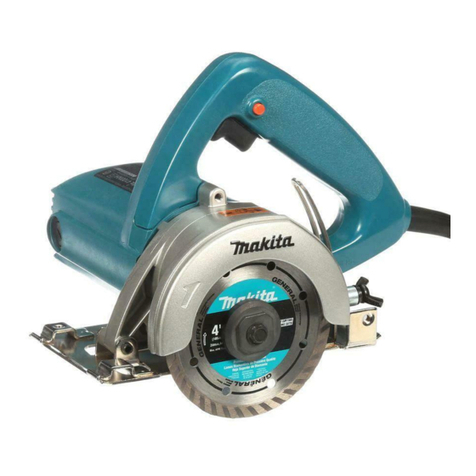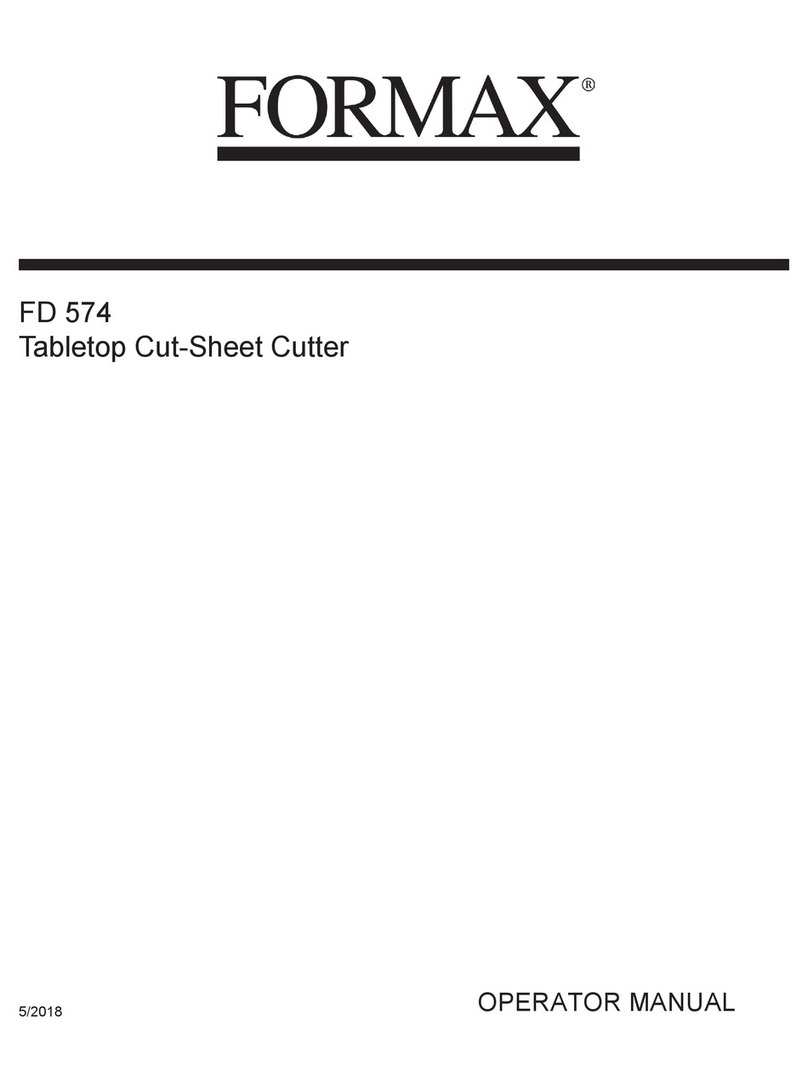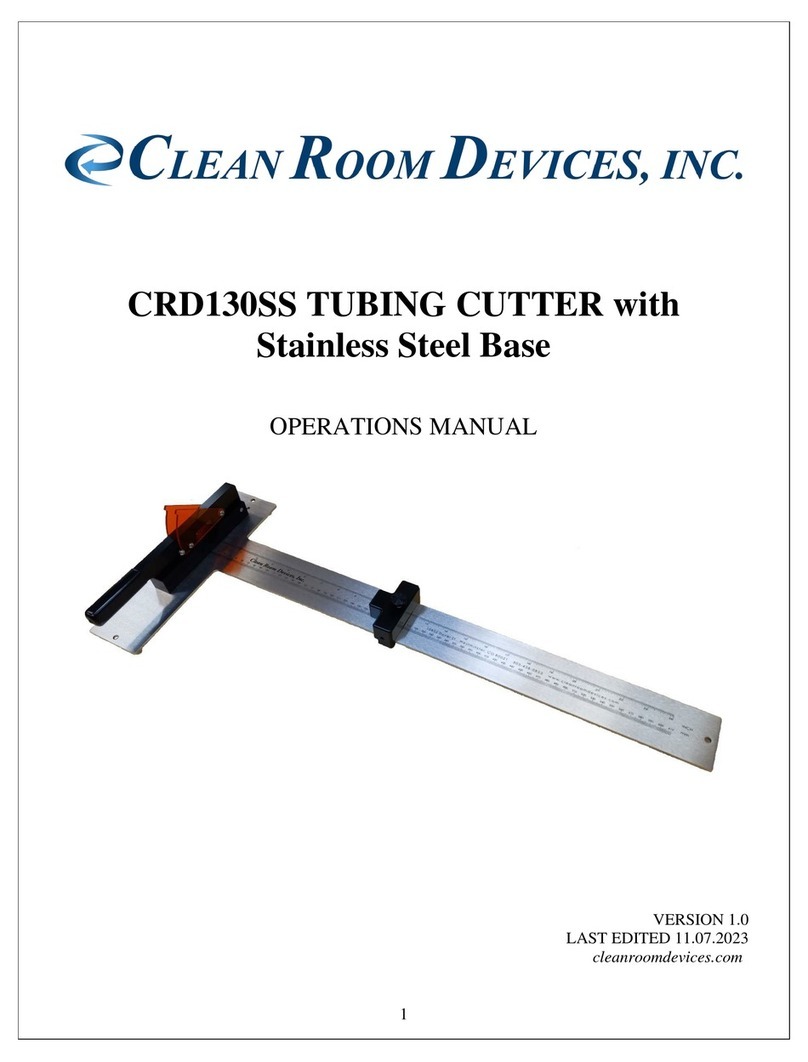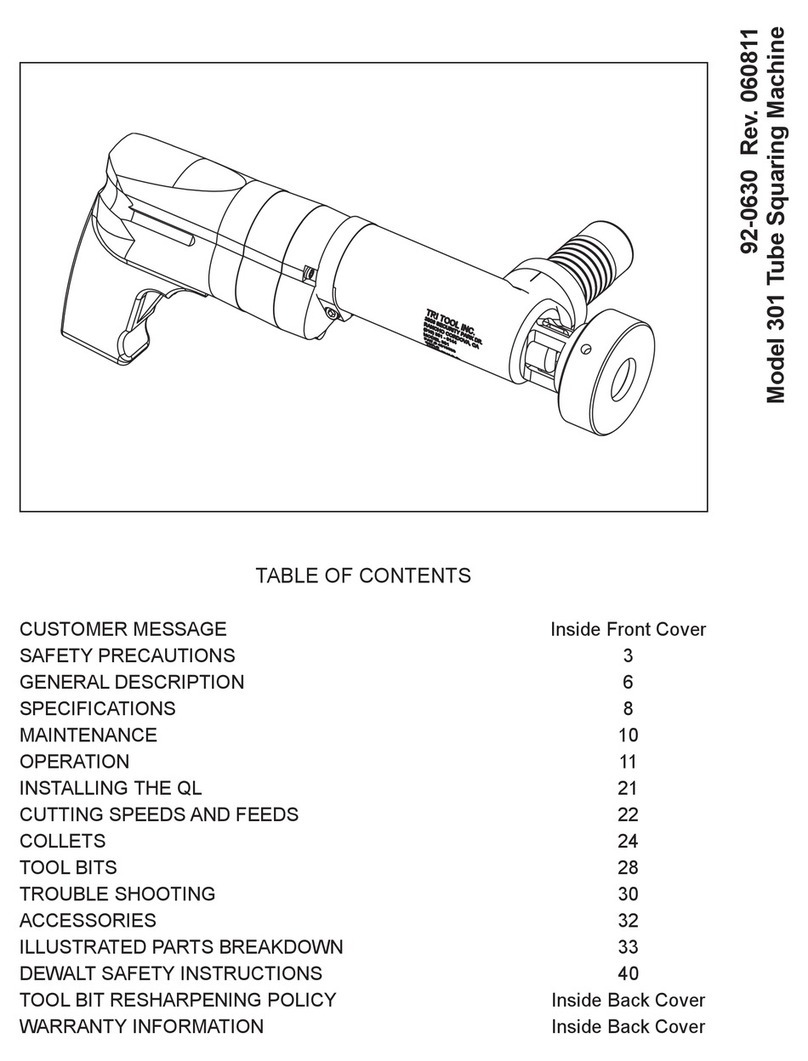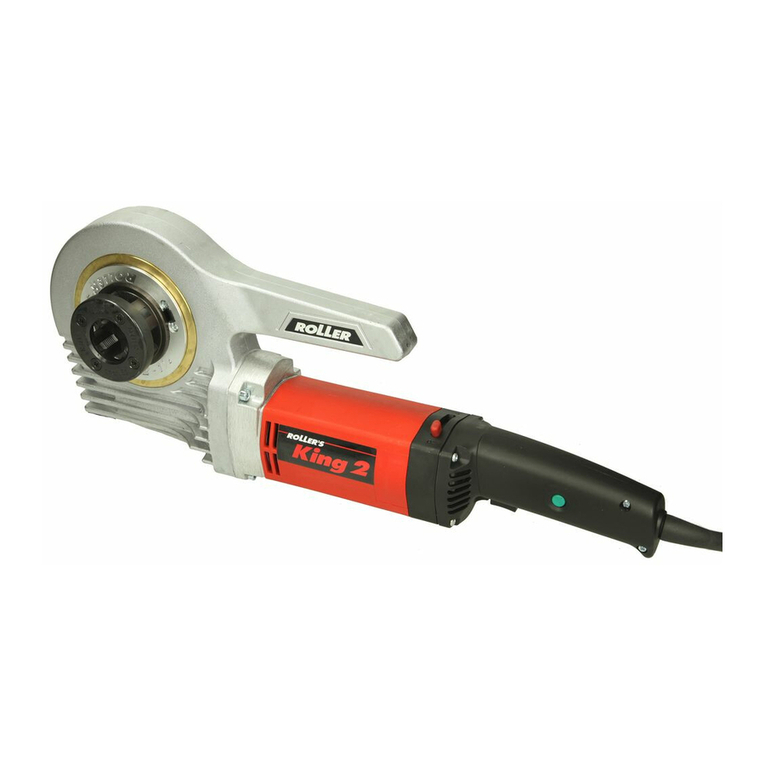
INDEX
GUIDE TO THE MANUAL .........................................................................................................1
GENERAL .................................................................................................................................2
1 MACHINE DESCRIPTION ..........................................................................................4
1.1 Main Characteristics ...........................................................................................4
1.2 Working parts .....................................................................................................5
1.3 Technical Data ...................................................................................................6
1.4 Accessories provided .........................................................................................6
1.5 Safety .................................................................................................................7
1.6 Electric circuit .....................................................................................................7
2 TRANSPORT ..............................................................................................................8
2.1 Packing ...............................................................................................................8
2.2 Unpacking ..........................................................................................................8
2.3 Machine handling ...............................................................................................8
3 MACHINE INSTALLATION AND PREPARATION ....................................................9
3.1 Checking for damage .........................................................................................9
3.2 Positioning ..........................................................................................................9
3.3 Description of work station .................................................................................9
3.4 Environmental conditions ...................................................................................9
3.5 Graphics .............................................................................................................9
4 REGULATION AND USE OF THE MACHINE .........................................................10
4.1 Micrometric tracer point ....................................................................................10
4.2 Tracer point spring ...........................................................................................10
4.3 Right-hand clamp movement ...........................................................................10
4.4 Using the key stops ..........................................................................................11
4.5 Using the jaws ..................................................................................................11
4.6 Checking and gauging ......................................................................................12
4.6.1 A
XIAL GAUGING ON BIT
/
DOUBLE BIT KEYS
...............................................................12
4.6.2 D
EPTH GAUGING
...................................................................................................13
4.7 Cutting operations ............................................................................................14
4.8 Cutting bit and double bit keys - male ..............................................................14
4.9 Cutting bit and double bit keys - female ...........................................................15
5 MAINTENANCE ........................................................................................................16
5.1 Cleaning ...........................................................................................................16
5.2 Carriage replacement .......................................................................................16
5.3 Replacing the tracer point ................................................................................16
5.4 Replacing the cutter .........................................................................................17
5.5 Replacing the brush .........................................................................................17
5.6 Belt replacement and/or tensioning - Belt tightening pulley replacement .........18
5.6.1 B
ELT TIGHTENING PULLEY REPLACEMENT
..............................................................19
5.7 Replacing the master switch ............................................................................19
5.8 Condenser (motor) and/or Feeder (lamp) replacement ....................................20
5.9 Speed commutator ...........................................................................................21
5.9.1 R
EPLACING THE COMMUTATOR
..............................................................................21
5.10 Motor replacement ...........................................................................................22
5.11 Replacing the fuses ..........................................................................................23
5.12 Replacing the light bulb ....................................................................................23
6 DECOMMISSIONING ...............................................................................................24
7 AFTER SALES SERVICE ........................................................................................25
7.1 How to request service .....................................................................................25
